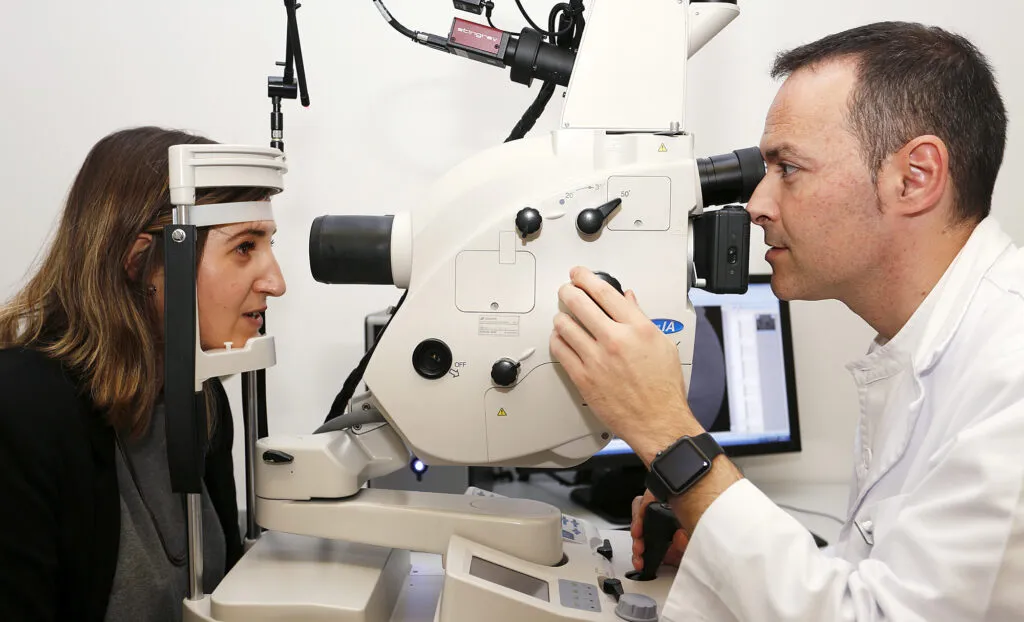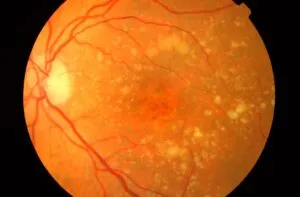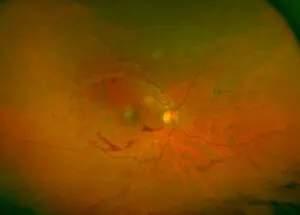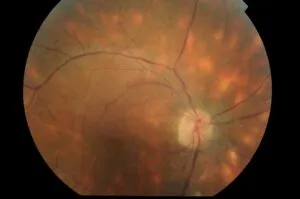Diagnostic tests
Ocular angiography

What is angiography?
Angiography is a technique that studies the blood vessels and is used in numerous medical disciplines including ophthalmology. In this field, it allows us to analyse the circulation of the ocular fundus, showing the vasculature of the retina as well as the layer just behind it: the choroid.
To perform this test, a contrast substance is injected intravenously; this is usually fluoroescein (to examine the retina) or idocyanine green (choroid). The contrast travels through the blood and dyes the ocular blood vessels meaning we can see its circulation in real time and capture images of its status using sophisticated photographic equipment. Thanks to current wide field systems, these images can show 90% of the eye’s vascular system in a single image.
What do we use angiography for?
Angiography provides valuable information for the diagnosis and monitoring of vascular diseases affecting the ocular fundus, as well as for check-ups after some treatments. In addition, at Miranza clinics we also offer an evolution of this technique, the angio-OCT, which is more comfortable and faster to perform as it does not require the injection of contrast.
- It is a painless procedure performed during a consultation.
- It requires dilation of the pupil with drops (mydriatic eye drops). They take effect in around 15 minutes and you have blurred vision for a few hours. It is a good idea to bring someone with you to the clinic in this case.
- The contrast substance we inject (usually in the forearm) takes effect in just a few seconds. It may cause mild nausea or a temporary hot feeling, side effects that last no longer than the time it takes for the test to be performed.
- Photos of the eye are taken over a period of 5-15 minutes and we obtain the results immediately for analysis by your ophthalmologist.


